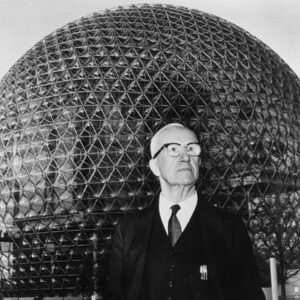“For the photographers Bernd and Hilla Becher, the aesthetics of a tipple or water tower rivaled anything that a curator could set on a pedestal,” The German husband-and-wife team spent their career photographing industrial structures, which they described as “anonymous sculpture.” Using blackand- white film and large-format cameras set on tripods, the couple documented grain silos, blast furnaces, and lime kilns “as meticulously as Ansel Adams photographed Yosemite,” offering frontal views of each structure and avoiding shadows or any trace of people. The Bechers then grouped the structures by type, making it easier for viewers to perceive each structure’s unique sculptural features. The couple’s work from 1959 on was “almost immediately recognized as groundbreaking.” And as this major retrospective affirms, that judgment “has stood the test of time.”
“The influence of the Bechers on contemporary photography is hard to overstate,” Like other minimalists, they produced art that “didn’t dress itself up as art.” Instead, it was self-effacing, the work of fastidious documentarians who poured time into creating each image to ensure the erasure of their own touch. To assemble a grid of photographs of similar smokestacks or grain silos or coal tipples required years of travel across Europe and the United States.
The Bechers “took an obvious delight in the variety of fantastical shapes they came upon,” and their delight is contagious. The grouped structures “begin to resemble families,” each populated by an array of distinct personalities. But the work can seem too apolitical. “You wouldn’t know it from a typical presentation by the Bechers,” but many of the structures they admired were poisoning the planet. Some had fueled Adolf Hitler’s war machine.
But of course the Bechers understood that, Like many of their postwar contemporaries, they “cast a doubting eye on earlier aspirations to scientific and technical order,” but were unique in choosing to do so by mimicking the language of scientific documentation. Viewing the Bechers’ industrial-age taxonomies, “you come away with an overall impression of lightness, of delightful order, even sometimes of gentle comedy.” In fact, the assorted water towers in a typical collection come off, “despite their concrete grandeur,” as “faintly ridiculous”—as much totems to the human instinct to collect and organize as to the human capacity to amass and multiply power. The Bechers, in short, were jesters, and effective ones at that. “By collecting water towers the way someone else might collect cookie jars, they cut industry down to size.”


